#Dustin Wong
Explore tagged Tumblr posts
Text

Dustin Wong - Perpetual Morphosis
I've been a fan of Dustin Wong for some time now, but I've done a bad job keeping up with his recent releases. That changes now! Freshly released by the Hausu Mountain label, Perpetual Morphosis sees Wong performing typically dizzying feats of guitar wizardry, twisting his strings into kaleidoscopic visions, balearic drifts and strangely beautiful shapes, embellished by electronic production and other unidentifiable sonics. There's an ever-shifting, almost hyperactive sensibility at work here, but things never get too manic; Dustin always has breezy melodies and playful textures up his sleeve, ensuring that you're not exhausted by the end of the LP. Instead, you're ready to go back to the beginning to hear what you missed.
7 notes
·
View notes
Text
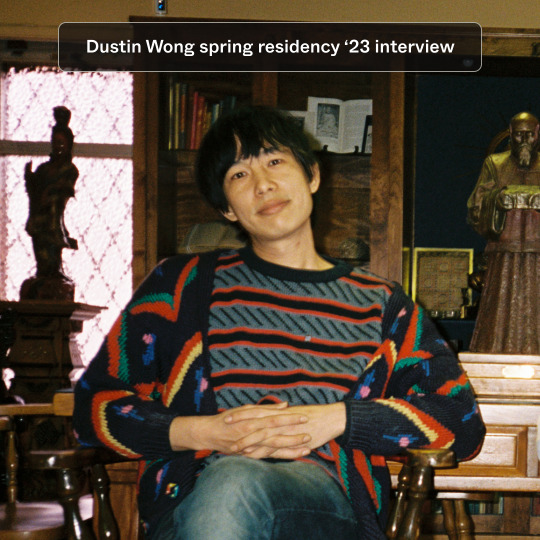
Born in Hawaii and raised in Japan, Dustin Wong is an American guitarist and former member of art-rock band Ponytail. Represented through Thrill Jockey and (soon) Leaving Records, Dustin has also collaborated with musicians Takako Minekawa and Dan Deacon.
We recently had a chance to speak with Dustin about his practice and upcoming spring residency with us. Get cozy for this conversation that meanders through the architecture of sonic collaboration, landscapes of music-making, and being inspired by AI impressionism.
Interview conducted and edited by Light Liu, Director of Community Platforms at Floating.
Light: Let’s start by talking about your music, your practice, and what you're looking to do with music in general.
Dustin: There's been a lot of changes in process since I started playing publicly. At first I was just trying to figure out how to put together sounds using software by trial and error and incrementally try to understand the theories and how things worked.
It was all visual and shapes, like squares and triangles and rectangles, putting together shapes to create sounds. And as I started doing bands [in Ponytail], music was all based on ideas rather than theory, through trial and error working things out, [then later realizing] what kind of musical ideas we were actually [using].
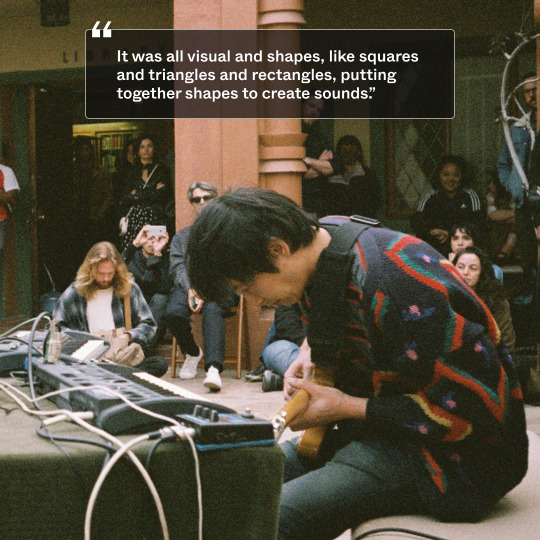
[Then] it shifted more into solo performance and group-based music and that became more about studying the geography of the guitar and understanding the mechanics of how each note corresponds to each other, research and study of harmony, counterpoint, patterns & percussive elements.
I started collaborating with Takako, and that became the realm of sampling, the idea of taking a sound and understanding what those sounds can feel like in different octaves. While we were in Japan, at the end of the show, the promoter would [sometimes] suggest doing improvisations with the people and the bill, and I found that to be really novel. I started getting the bug for improvising, and we shifted into a more free form structure. We went on a few tours where we improvised [the whole time.]
Here in LA, I became way more interested in the idea of building something new every time when performing. There are more opportunities here to play more improvised music with other players here. I was so impressed with how people can catch a sound, play with it and return something back that’s resonant or challenging or [taken] to a whole new realm. It's been such a great practice for me what I'm trying to do with the Floating residencies.
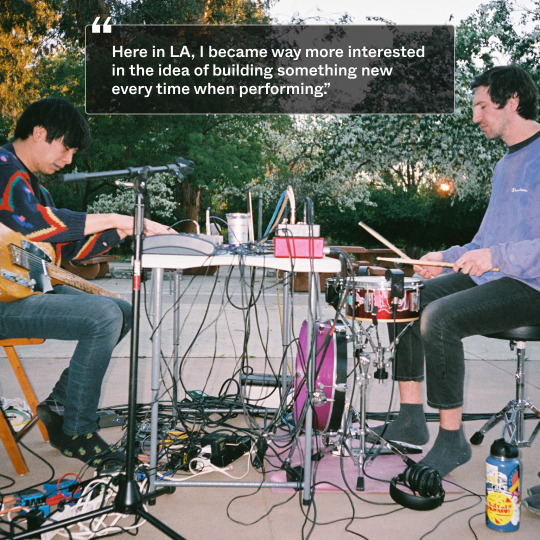
L: Listening to your music & the way that you talk about your music, there's this very cross sensory feeling about your approach. It’s very visual and almost tactile, there’s a real sense of a concept or framework to your music. Would you like to talk about that at all?
D: It's changed a lot, my idea of the way I approach my gear, my interface, my pedals. When I was doing solo loop guitar, I associated everything as a kind of factory, each pedal corresponding to each other as this module of resources [where] sound is being transformed into another sound, into another sound, into another sound.
That has changed quite a bit. I don't see my gear as a factory anymore. The scenery has gotten wider. It's like I can see the things outside of the factory so to speak, where there's sounds that slip into the space, like cars, trucks, people yelling, sirens. It was a bit of a challenge in the beginning, because I always thought of those sounds as being intrusive, but the fault was mine, [because] in a sense, I had to include those sounds for the music to work. And now I welcome those sounds when I practice. It's inspiring. It's like, “Oh, I want that texture, and so I'll include that.” It's like, “Thank you for the tip,” you know?
L: How are you taking this kind of mindset into your residency at Floating this spring?
D: I'm hoping that the people I'll be playing with will create, you know, fun accidents. That can be a potential for something new.
L: Is there some kind of intent that you have for the residency or how you’re curating people?
D: The first performance will be with Cate Kennan and Celia Hollander. They're both excellent with the keyboard, the synthesizer and [have] a sensibility of the surreal and uncanny aspects of what music can do, and I'm just really excited to explore these new spaces. I want to grow more as a musician, I want to know what I can do beyond what I'm doing right now. And by playing with other people, you're able to reflect on each other and see yourself more through other people.
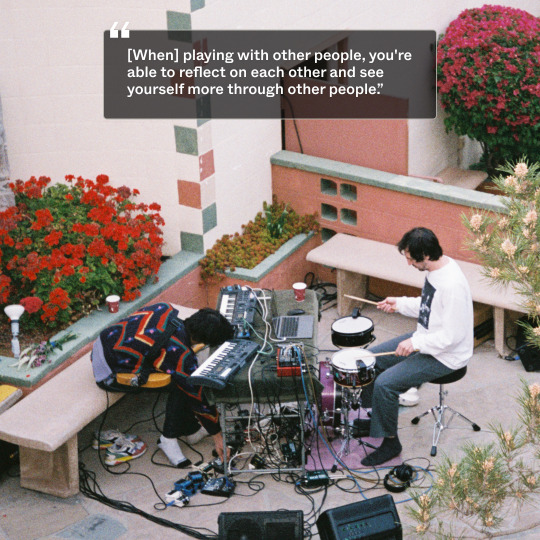
The second performance will be with Butoh dancer, Kyoko Takenaka. That'll be this whole idea of how movement, physical & bodily movement, can affect how I will change my sounds or how the sounds can change physical movement within the context of the environment. I'm excited about that. And then the third performance will be with Brin and Dylan Fujioka, and they're both drummers, so it'll be more of an exploration of rhythm and percussion & how I can navigate through that. It’s like trying to put together a fun obstacle course, by inviting your friends to play and maneuver and find yourself through that. [laughs]
L: That's a really nice way of putting it. Have you played with them before?
D: I have not played with Kate in a session before, and not really with Celia either.
L: So what drew you to their work?
D: I've played a show with Cate where we were on the same bill, and she plays these sounds that, it's so hard to put into words, it's not cerebral because it feels physical, but it does take you to a place that's otherworldly, a realm that's surreal, fantastic, dream-like, not in the sense of the landscape, but more of a feeling, that you're feeling it in your mind and in your soul.
Similarly [with] Celia, she's able to juxtapose different sounds that when you hear it it makes you realize, “Of course these sounds work together,” but you would never think to put those sounds together. It's poignant, simple, [but also] very intentional.
L: What kind of relationship do you feel like you have to the outdoors or playing music outside?
D: It's the best.
Floating was actually the first show I've played since the pandemic. That was with Jeremiah Chiu at the Japanese tea garden at Storrier Stearns. It was the most cathartic experience I've had in a long time, because I hadn’t played a show in maybe a year or so. And maybe more so now, but you feel comfortable being outside. You feel safe.
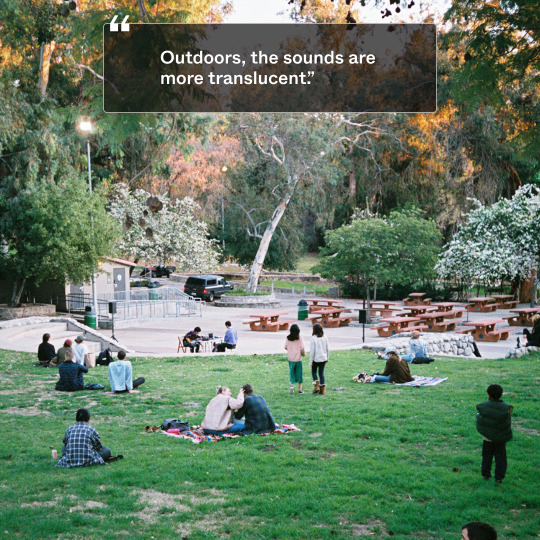
The way the sounds bounce, you know, it's different in every outdoor setting. If there's trees, there's a certain acoustic reverberation that the trees have, they soak in the sound, but they also bounce back the sound, and you have the wind. The sounds can be very welcoming, the rustling of the leaves, or even a person in a distance having a conversation, the sounds all integrate without being intrusive. Dogs barking, children crying. It all works for some reason, rather than if it was indoors, it would feel different I believe.
L: How so?
D: It'll be too much. It'll bounce off the walls too much. The pace of the sounds are different, you know, it's a lot more opaque. Outdoors, the sounds are more translucent.
L: That's a really lovely way to describe that, it's very poetic and also insightful in a way that's different from stating an objective fact about it. It's nice. [laugh] I really liked what you said earlier about the geography of the guitar. Is there any resonance between that and the geography of a landscape?
D: It's kind of like treading paths, right? You're walking through this environment that you're not accustomed to. When I was learning guitar, I was like, “How do I approach this?” And at first I was like, well, I'll just figure out, I'll make recognizable shapes that I can memorize. And the path to this environment, it just starts growing into the landscape more. It's like, “This is a shortcut.” Or, “This is the long way around, but a better view.” I just feel a lot more comfortable now with the guitar. It feels like a home where I feel comfortable walking around.
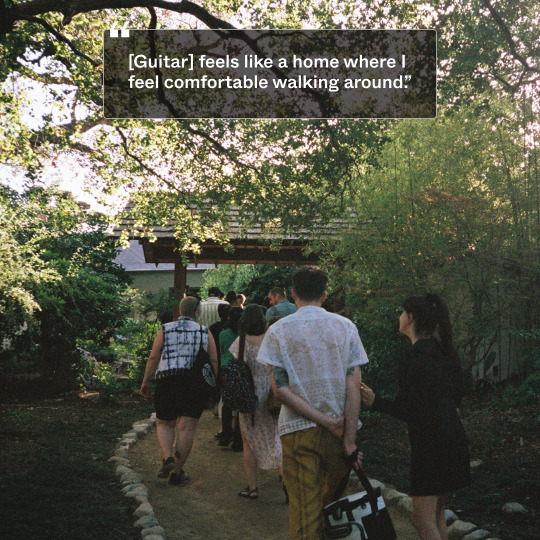
L: Cute, and very cool. Let’s see, is there anything else that you want to add?
D: The other thing I've been thinking about a lot is the recent AI stuff that's been happening with stable diffusion and AI-based music and where artificial intelligence is able to emulate imagery. It's reminding me of this idea of likeness. I don't know if you remember being a child and having a classmate that's really good at drawing and being like, “Wow, that looks like the thing you're looking at.” I've been really thinking about the idea of likeness, in the sense of music as well. It kind of sounds like music, and maybe that's just right, you know?
I think that's what the fascination of impressionism is. It's not a complete painting, but that's what makes it complete. I'm exploring that idea with my sounds right now, like two steps removed from “what it's like.” AI's making “what it looks like,” but I'm trying to redefine the idea of “likeness.” It's measuring like, where's “almost there?”
L: Do you have anything coming up that you wanna promote?
D: Two records coming out this year. The collaboration with Brin will be coming out with Leaving Records this year. And a solo record is coming up on Hausu Mountain Records. I'll be preparing for those releases soon.
Float with us this spring for Dustin Wong’s seasonal residency & check out his upcoming albums :)
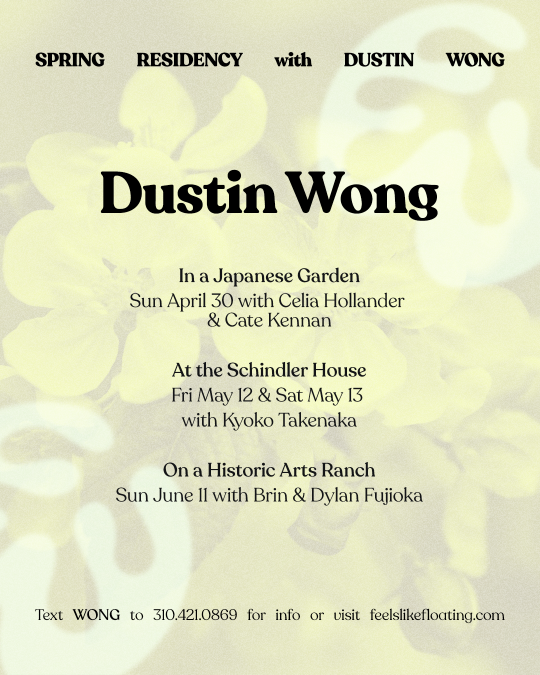
#music#interview#music interview#outdoor art#outdoor music#nature#guitar#artist residency#floating#artist interview#dustin wong#celia hollander#cate kennan#kyoko takenaka#brin#dylan fujioka
2 notes
·
View notes
Text
Days Of Steam 006: Silver Tank
(Released May 26, 2023)
Returning from hibernation with uncompromising and enveloping sonics from København's @silvertank / I keep telling myself I should write some sort of essay about the notions of queer ambience / sound sonics (the relationships + significations they have with each other), and then I hear a whirlwind of a mix like this that says more than an essay ever will.
"Inspired by the phrase you hear in the beginning of the mix from the late Vito Russo, a theme of disruption runs through the mix, from the blending, to the changes in sound, vibe, and tempo"
Kara-Lis Coverdale - Fantas Morbida [Editions Mego, 2021] Vito Russo - Disrupt Their Lives [Anthology, 2023] Claire Rousay - Discrete (The Market) [American Dreams, 2021] Dustin Wong - Yves Tanguy [The Jewel Garden, 2021] Burial - Rival Dealer (Jon Hopkins Edit) [Unreleased, 2015] Boards Of Canada - Kid For Today [Warp, 2000] ABADIR - II [Genot Centre, 2021] aya - i know tsundoku (lxc x odeko) [Self-released, 2019] Sekelembele - Simbisa [Nyege Nyege Tapes, 2020] Slikback - Waxfigure [Self-released, 2020] Adolescent Behaviours - Rubberband [A Colourful Storm, 2021] Coil - Something [Chalice, 2000] Frog Of Earth - Salamander Dub [wherethetimegoes, 2021] Jago Nwaternbe - What's My Combo [GORGE.IN, 2022] Michael J Blood & Rat Heart - Woaaah Mumsie!!! [Bodytronixxx, 2022] Zedgar Infiniti x Maya Songbird - Blame Game (Queen Of Hell x Ghost Remix) [New World Dysorder, 2020] Clippng - Black Up (Dave Quam Remix) [Sub Pop, 2021] Boc Scadet - Sel Alterat [Clickclickdrone, 2004] Autechre - Drane [Warp, 1999] Flare - Turbinates [Sublime, 1996] Caterina Barbieri & Lyra Pramuk - Knot Of Spirit [light-years, 2022]
#SoundCloud#Silver Tank#Kara-Lis Coverdale#Vito Russo#Claire Rousay#Dustin Wong#Burial#Jon Hopkins#Boards Of Canada#ABADIR#aya#Sekelembele#Slikback#Adolescent Behaviours#Coil#Frog Of Earth#Jago Nwaternbe#Michael J Blood#Rat Heart#Zedgar Infiniti#Maya Songbird#Queen Of Hell#Ghost#Clipping.#Dave Quam#Boc Scadet#Autechre#Flare#Caterina Barbieri#Lyra Pramuk
0 notes
Text
So yeah, Spirit World has been confirmed to be a Cass Cain miniseries, well kind of, with the new character and John, lmfao.
Anyway look at this Dustin Nguyen cover I am flabbergasted they got him to do a new cover.

54 notes
·
View notes
Text
YES! YES! YES! YES! YES! Oh happy day!

Spirit World mini series by Alyssa Wong and Haining CONFIRMED for AAPI Heritage Month!!!
Dustin Nguyen variant featuring new non-binary hero Xanthe (they just appeared in this week’s Lazarus Planet: Dark Fate #1)
BONUS!! Dustin Nguyen is doing a variant #1 cover featuring Cass and Xanthe!!

44 notes
·
View notes
Text
3 Ninjas Kick Back (1994)

While I didn't enjoy this film, that doesn't mean you won't. No matter what I say, the people involved in this project did it: they actually made a movie. That's something to be applauded. With that established...
3 Ninjas Kick Back is the Home Alone 2 to 3 Ninjas. It’s an inferior sequel - which is saying something considering how insufferable the first was - that does little more than regurgitate what was “successful” about the first, but in a different country. There isn’t an ounce of inspiration in its dreadful 93-minute running time.
Years ago, Grandpa (Victor Wong) defeated Koga (Sab Shimono) in a martial arts tournament. Ever since, the boy-turned-Japanese-crimelord has wanted the tournament’s prize - a dagger that doubles as a key to a cave full of riches - back. When their grandfather is hospitalized while in Japan, the three ninjas - Rocky (Sean Fox), Colt (Max Elliott Slade) and Tum-Tum (J. Evan Bonifant) accidentally play into Koga’s hands by visiting their sensei and bringing the dagger along with them.
The one good thing I will say about 3 Ninjas Kick Back is that it doesn’t waste any time pretending to be a good movie. One of the first scenes is a baseball game (a game with no age restrictions apparently) in which all sorts of dirty tricks are employed to win, including eating large amounts of beans and farting to knock out players. For a brief moment, I found myself in an out-of-body experience, forced to examine the circumstances that brought me to this moment. Sanity vanished. Only madness remained and I laughed hysterically. Not at the movie; at myself. Soon after, I was pulled back into my body and forced to confront this horrible excuse for children’s entertainment.
As before, the stunts and fights are unconvincing and badly choreographed. I know martial arts are supposed to empower you, but not to this extent. Colt, Rocky, Tum-Tum and their Japanese friend Miyo (Caroline Junko King) single-handedly defeat Koga’s minions like they’re made of wet paper. They don’t merely beat them, they humiliate them by pantsing the shadow warriors, knocking them over with Home Alone-style traps, or fighting while taking a phone call. I’m shocked no one disemboweled themselves out of shame. I’m talking about the characters and the actors.
It’s a movie without stakes since the three bumbling goons Koga initially sends after the three ninjas are so awful and so unfunny the crime lord’s credibility disappears like tears falling into the ocean. I don’t just mean the physical stakes; the emotional stakes are also nonexistent. The closest thing to a character arc the boys receive goes something like this: Colt has a temper so he… learns to focus and hit a baseball? Rocky can’t pitch because he doesn’t want to wear his glasses… until Miyo convinces him to? Tum-Tum… eats? Oh, and he wants to go to Japan with his grandfather, or something.
3 Ninjas Kick Back is aggressively juvenile and unfunny. From it emanates the distinct stink of a project no one cared about, that was squeezed out because the first was moderately successful and because the studio could keep ripping off “Home Alone” via the current popularity of martial arts films (This was released the same year as The Next Karate Kid and a year after Teenage Mutant Ninjas Turtles III). It doesn’t even try to check off any storytelling basics. You watch it in embarrassment. Knowing that there are still two more pictures in this series makes me wonder whether I’ll make it to High Noon at Mega Mountain, or die trying. (September 24, 2021)

#3 Ninjas Kick Back#3 Ninjas#movies#films#movie reviews#film reviews#Charles T. Kanganis#Sang-ok Shin#Mark Saltzman#Victor Wong#Max Elliott Slade#Sean Fox#Evan Bonifant#Dustin Nguyen#Sab Shimono#1994 movies#1994 films
2 notes
·
View notes
Note
AW HELL YEAH! Finally I get a chance to ask about what you're working on!!! 😂 I'd like to know more about or see a snippet of the RE4 Dustjim Thing. The crossover of video games and wrasslers is relevant to my interests.
First off, it's honestly surreal to know you're interested in what lil' ol' me is working on, since I'm such a a big fan of your work, so THANK YOU SO MUCH! I got asked this one already, so I'll re-post the snippet from there, since I don't have much else but to make it a little more special, I'll add some more details in the tags, just for you!
Dustin recalled the meeting he'd had with the president. Even though she was a good foot and a half shorter than him, he'd never felt more intimidated in his life. She looked like she was in a living hell - which, he imagined, she was - but she spoke with such authority and power that Dustin couldn't get the words out of his head.
''I want to make two things very clear to you, Mr Howard,'' she had said. ''First, there will be no red tape on this assignment. I'm giving you carte-blanche to do whatever the fuck you need to get my son home in one piece. I don't care about collateral, and neither should you. Second, you do this for me and I'll give you whatever you want. I'll transfer you to any department, get you any position, any job you want. You want money? Name your price. Hell, I'll make sure you have the rest of your goddamn life paid for and you can sit at home drunk off your ass for all I care. Just find my son and bring him back to me.''
It wasn't the kind of offer he could refuse. Dustin kept staring at the photo, the face of the man in question smiling back at him, blissfully unaware of what was going to happen to him in the near future. He wondered if he'd made the biggest mistake of his life, accepting this mission. Potentially, the last mistake he'd ever make.
#So Dustin is Leon and Jim is Ashley obviously#Kris is the Ada Wong equivalent because you know she'd kill it in that role#And Yuta would be the Krauser#Sort of an inverse of the game - instead of being his trainer#Yuta is a former trainee of Dustin's#Their showdown would be JUICY as all hell that way#Thank you so much for this!! I promise I'll get to your second one...EVENTUALLY!
3 notes
·
View notes
Text
Dawn of DC delivers three new superhero series, City Boy, The Vigil, and Spirit World, in May
Dawn of DC delivers three new superhero series, City Boy, The Vigil, and Spirit World, in May #comics #comicbooks #dccomics
“Dawn of DC” is this year’s initiative from DC Comics featuring new series, new creative teams, and new characters all-together! In May, the comic publisher will release three new six-issue limited series each featuring Asian superheroes. Check out the solicits below! Spirit World #1 (of 6) Story: Alyssa WongArt: HainingCover: HainingVariant Covers: Dustin Nguyen, Trung Le Nguyen, Zu OrzuOn…

View On WordPress
#Alexandre Tefenkgi#alyssa wong#anand rk#city boy#comic books#Comics#dc comics#dustin nguyen#greg pak#haining#inhyuk lee#Lalit Kumar Sharma#michael cho#minkyu jung#mukesh singh#pop mhan#ram v.#spirit world#sumit kumar#sunny gho#The Vigil#trung le nguyen#zu orzu
2 notes
·
View notes
Text




*That level of loyalty from Wong on MJ here can only be found in a comic. Easily my favorite Alyssa Wong narrative at this point in the same vein as Sana Starros is my favorite character she created. Finally, Wong challenges her pen by getting out of her comfort zone of writing about LGBTQ relationships/persons.




*This story completely contradicts Pete's actions in "Venom War", but still reads phenomenally and does what comics are suppossed to do - challenge and shift reader's paradigms about the world around them.
#Spider Man Black Suit And Blood#black suit and blood#Greg Land#Dustin Ngyuen#alyssa wong#sana starros#Fran galan#sumit kumar#j. michael straczynski#house of ideas#venom war
0 notes
Text
I've seen posts here and there about Steve being done up in drag for fun, but please consider Steve discovering drag pageantry.
Drag pageants have been around since the 60s, and we already know that Steve is competitive, he played sports and he got jealous from Dustin just talking about Eddie.
So imagine Steve being done up by a queen because he's "so gorgeous, your bone structure is to die for, darling" and maybe he enjoys it, likes how it makes him look, likes the confidence he has while all made up.
And then he finds out you can compete? In makeup and dresses and be bitchy on purpose? He'd be all over that shit, and he'd be good at it.
Eddie would be nothing but supportive, and when Robin moves out they turn the spare bedroom into a second closet just for Steve's drag. He eventually gets a sewing machine and - after much learning - starts making his own competition gowns because he has a Specific Design that he wants to wear and can't find anything close enough to satisfy.
(Side note: I imagine his style being something like Vida Boheme in To Wong Foo, something classy and feminine, possibly influenced by his mother's sense of style (she may be an awful person but by God is she fashionable).)
When Eddie's band makes it big, they plan all of their shows around Steve's pageants because Eddie has to kiss Steve good luck before every single one. The one time he didn't, the zip on Steve's dress busted and one of his heels snapped and while Steve isn't superstitious, Eddie certainly is and "The only time I didn't kiss you good luck, everything fell to shit. It's not gonna happen again, baby, I promise."
They end up getting a shelving unit just to hold the crowns and scepters that Steve has won, the sashes get pinned to the wall and are quickly filling the space available. Steve takes a flower from every winning bouquet and presses it, has a little album where he keeps them, along with a photo of him and Eddie after each win.
Imagine Eddie proposing after a pageant one night. Steve didn't win, maybe he was second or third, but he didn't come home with the crown this particular night, and he's standing in the bathroom, scrubbing away at his face and working over where he may have lost points, trying to figure out how to be better next time.
And then Eddie is there, ring in hand and a lovestruck look on his face and all Steve can think about is that he's being proposed to while looking like a mess. His hair is sweat-slick from being under a wig for hours, makeup half-off, and still wearing the chunky earrings he'd forgotten to take out again.
But Eddie tells Steve how proud he is of him, how much he loves this side of Steve that only Eddie gets to see. That he wants to see it for the rest of his life and "Stevie, baby, if you don't say yes I might cry," and then cries anyway when Steve does say yes and kisses him, and then they're laughing at the bright lipstick smeared across their mouths and Steve completely forgets that he didn't win that night.
#this got away from me a little#steddie#steddie fic#steve x eddie#steve harrington#eddie munson#stranger things#joey writes#pageant queen steve harrington#i dont actually know a lot about pageants but lets ignore that#drabble
579 notes
·
View notes
Text
















From Spider-Man: Black Suit & Blood #001
“Losing Face”, by J.M. DeMatteis (W) and Elena Casagrande (A)
“Inside the House”, by Alyssa Wong (W) and Fran Galán (A)
“Dysmorphia”, by Dustin Nguyen
“Fade to Black”, by Michael Straczynski (W), Sumit Kumar, Craig Yeung and Dono Sánchez-Almara (A)
#spider-man: black suit & blood#spider-man#peter parker#joe face#joseph facello#the mouth#jimmy delgado#joe facello jr.#isabella facello#mary jane watson#venom#marvel#comics#marvel comics
8 notes
·
View notes
Photo
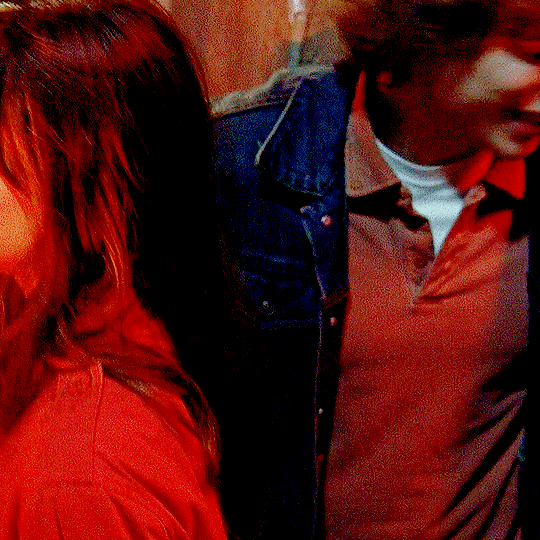
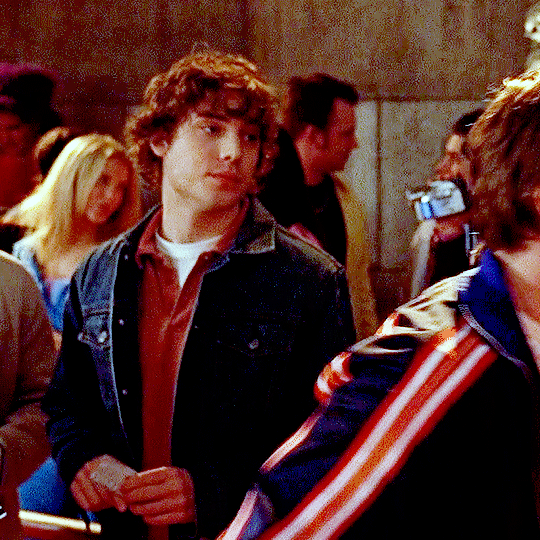
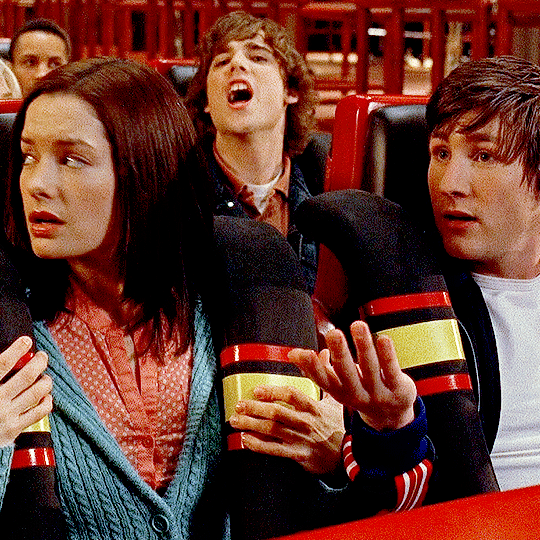

Dustin Milligan as Marcus Bava FINAL DESTINATION 3 (2006) dir. James Wong
#rip marcus#final destination 3#finaldestinationedit#dmilliganedit#mine*#gifs*#finaldestination*#***#100
122 notes
·
View notes
Text
Encore des rêves indociles de justice handie pour la fin du monde

[initialement publié dans la revue Multitude 94, Justice handie pour des futurs dévalidés, traduit de l’anglais (Canada) par Emma Bigé et Harriet de G. Texte Original et Image d'illustration de Leah Lakshmi Piepzna-Samarasinha]
Comme tous les textes de ce blog avant lui, il est disponible à la commande à prix libre, pour permettre de soutenir cette activité. Pour cela, il suffit de m’envoyer un message privé en précisant sa commande, le prix qu’on veut payer, son mail & selon le mode d’envoi : une adresse. Vous pouvez aussi le retrouver ci-dessous ou dans sa version imprimable ici (en pleine page) ou ici (en format cahier).

Tu te rappelles comment, en 2019, on a survécu ? Comment tu as appris que tu avais un cancer, et comment tu as cru que tu allais mourir, soit du cancer, soit de la négligence du chirurgien sur la table d’opération ?
Tu te souviens comment, en 2018, c’était l’année où un groupe de personnes handicapées avait construit un réseau de distribution de masques pendant les incendies de forêt en Californie, distribuant près de 80’000 masques en un mois ? Tu te souviens de la première fois où tu as entendu les termes « pic de pollution de l’air à grande échelle », et comment ce n’était pas la dernière ? Tu te souviens de la première fois où tu as vu une section « justice handie » à la bibliothèque municipale, avec les visages d’Audre Lorde et de Leroy Moore côte à côte sur l’étagère créée par Dustin Gibson ? Tu te souviens quand la loi sur les revenus annuels garantis est passée, et quand le revenu minimum a été augmenté et quand les personnes sous protection sociale avons enfin pu garder nos revenus ? Tu te souviens des réparations obtenues après les abus médicaux ? Tu te souviens du jour où le dernier centre d’internement de force pour jeunes autistes a fermé, et où on s’est retrouvées pour des cérémonies de deuil et de célébration ? Tu te souviens du jour où on a commencé à faire des réserves de masques, d’eau et d’essence avant d’emménager dans la ferme, tenue par des crip racisées, où nous vivons maintenant ? Tu te souviens quand nous avons construit notre premier monument aux mort·es pour célébrer celleux que nous avions perdu‧es, Carrie Ann Lucas, Steve, et toustes les autres ?
Au printemps 2019, Alice Wong du Disability Visibility Project [projet de visibilité handie] m’a demandé d’écrire une suite à mon article de 2017, « Cripper l’apocalypse : rêves indociles pour une justice handie » pour son anthologie Disability Visibility. J’ai dit oui. Et puis, j’ai eu du mal à l’écrire. Il est difficile de rêver quand on est terrifié·e, et c’est et c’était des temps terrifiants. La répétition incessante des traumatismes des trois dernières années, des horreurs du trumpisme qui sont souvent pires que ce que l’on pouvait imaginer, et qui ne cessent de s’empiler les unes sur les autres, m’ont mis·e, moi et tant d’autres de mes proches, dans une sorte d’état perpétuel d’immobilité du type « chevreuil pris dans les phares d’une voiture ». Des camps de concentration aux durcissements des conditions d’accès à la nationalité, de l’ascension de Brett Kavanaugh à la Cour suprême à l’interdiction d’entrée aux ressortisssant·es de pays musulmans, aux feux de forêt dans tous les coins du monde et à la glace qui fond aux deux pôles : on dirait qu’il est plus facile d’apprendre à lire le monde dans un livre que d’essayer de répondre à ses urgences en temps réel.
L’année dernière, au cours de la tournée pour mon livre Care Work: Dreaming Disability Justice [le travail de prendre soin : rêver la justice handie], je me suis souvent retrouvé·e à porter (à l’occasion des conversations publiques et sur les campus) le T-shirt conçu par la militante queer handie Latinx Annie Elainey Segarra où il est écrit que LE FUTUR EST ACCESSIBLE. Je fais ce truc régulièrement pendant mes interventions, où je demande au public de fermer les yeux un instant, de plonger au dedans, et d’imaginer le futur. En tant que personnes actives dans le mouvement pour la justice handie, nous savons que l’accès n’est que le premier pas sur la voie d’un futur handi libéré : c’est la rampe qui nous permet d’accéder à la porte où le futur pourra être façonné, mais ce n’est pas le futur comme tel. Mais quand je demande : « okay, à quoi êtes-vous arrivé·es ? », on entend le son des grillons. Tout le monde reste bloqué. Au mieux, iels arrivent à imaginer un futur où iels ne mourront pas dans des camps de concentration.
Mais en tant que personnes handies, nous savons que l’un des plus beaux dons que nous recevons, ce sont nos rêves Fols, malades, handis et Sourds, ces rêves que nous rêvons au-delà de ce que nous sommes autorisé·es à rêver. Et non, je ne parle pas de la « pornographie inspirationnelle », cet imaginaire validiste des rêves handis qui voudrait que « nous ne laissions pas le handicap nous arrêter », qui s’imagine que nous voulons marcher, voir ou être « normales » à tout prix. Être une super-estropiée ou une inspiration, mais jamais un être humain.
Je parle des petites, énormes façons quotidiennes dont nous rêvons de révolutions crips, de la façon que j’ai de me regarder dans le miroir, cheveux en désordre et mon vieux jogging et mes douleurs le cinquième jour d’une poussée majeure, et de dire : vous savez quoi, je ne vais pas me détester aujourd’hui. Et nos rêves de révolutions crips sont aussi dans nos manières de créer des refuges pour handicapées, des réseaux de parrainage pour handicapées, des façons d’aimer, de se battre et de s’organiser pour les handicapées que même les valides les plus talentueux·ses ne pourraient imaginer en un million d’années.
Et malgré toutes les manières dont nous sommes en enfer, nous sommes toujours en train de rêver. Alors que je vais à trois réunions du réseau de soutien par semaine pour des amies confrontées au cancer, à une chirurgie rénale et à des besoins continus en matière de handicap psy. Au moment où je prends, enfin, une profonde inspiration et demande l’aide dont j’ai le plus besoin à mes amies, et que je suis capable de le faire grâce au travail collectif effectué pour rendre l’acceptation de ce soutien sûr et possible. Alors que je commence à devenir l’artiste handicapéE d’âge moyen que j’avais peur de devenir, alors que j’arrête de prendre autant l’avion et que j’apprends à écrire et à parler et à partager mon travail sans voyager dans le Nebraska ou le Maine, dans une communauté d’autres écrivain‧es et artistes handicapé‧es qui ont trouvé une manière crip de produire et de vivre d’excellentes vies d’artistes handicapé·es.
Nous rêvons de brillantes réponses handies à la violence du changement climatique. Mask Oakland distribue 80 000 masques gratuits lors de l’urgence aérienne à grande échelle des incendies de forêt de l’automne 2018 en Californie. #PowerToBreathe, un réseau de douze organisations de justice pour les personnes handicapées, s’unit lors de l’incendie de Kincade de 2019 pour créer un réseau de « centres de survie » accessibles avec des générateurs et des purificateurs d’air pour et par les personnes handicapées qui s’organisent pour survivre aux coupures de courant potentiellement mortelles de de la compagnie électrique PG&E. Nous créons un espace culturel public de justice pour les personnes handicapées racisées, alors que Dustin Gibson, activiste noir basé à Pittsburgh, construit une collection dédiée à la justice handie dans une bibliothèque de quartier.
Quand UnitedHealthcare assassine la militante et avocate handiqueer latinx fèm grosse Carrie Ann Lucas en refusant de lui rembourser un antibiotique à 2000$, nos peurs, nos deuils et nos rages conduisent le Health Justice Commons à établir la toute première ligne d’assistance téléphonique contre les abus médicaux. Les travailleureuses du sexe handicapé·es, les migrant·es handicapé·es, les prisonnier·s handicapé‧es, les personnes handicapées qui sont en invalidité ou utilisent Medicaid se sont auto-organisé·es pour survivre face à Trump – et sont la raison pour laquelle Medicaid et l’ACA ont tenu bon tandis la règle de la « charge publique » de Trump n’a pas été adoptée1.
De nouveaux collectifs de justice handie se multiplient partout, du Disability Justice Network of Ontario à Detroit Disability Power et à Fat Rose. Mon adelphe, læ militant·e queer coréen·ne Stacey Milbern, a acheté et rendu accessible sa maison à East Oakland – le Disability Justice Culture Club – avec les 30’000$ qu’elle reçoit, tous les mois, en petits montant de vingt dollars envoyés des quatre coins de la planète par la communauté handie. Et deux cent personnes handies, grosses et vieilles brandissent des pancartes qui disent irremplaçable et #PersonneN’estJetable aux manifestations de Crips and Fatties Close the Camps [Les estropié·es et les gros·ses ferment les camps] en face des bureaux de la police aux frontière de San Francisco – un aperçu d’un mois de manifestations quotidiennes en août 2019 contre les camps de concentration formés par les services d’immigration aux ordres de Trump, manifestations menées par des personnes grosses et handicapées qui créent des liens entre d’un côté, nos expériences de l’enfermement dans les institutions psy, les maisons de retraites et les hospices, et de l’autre celles des immigrant·es (y compris les immigrant·es handicapé·es) qui sont enfermé·es.
J’écris tout cela pour me rappeler et pour nous rappeler. Même et surtout quand nous sommes terrifiées au point d’être immobilisées, nous continuons à rêver collectivement des futurs de justice handie et à les rendre possibles.
Se souvenir du passé pour rêver le futur : nous nous sommes toujours trouvé·es les un·es les autres
« Tu connais, toi, ce genre de personne handicapée qui veut juste être là pour les autres personnes handicapées, qui ne demande aucune reconnaissance, qui veut juste faire ce qu’il faut ? », me dit mon ami Lenny au téléphone. Bien sûr, je connais. Je ne lui dis pas, mais il a justement toujours été ce genre de personne pour moi.
À l’époque à Toronto, nous étions les deux seules maisons avec des rampes d’accès faites-mains du quartier. Avec le triomphe de la gentrification dans les quartiers ouest de Toronto, nous vivions au milieu de gens pauvres et de maisons aux porches à moitié déglingués. Des années avant le mouvement pour la justice handie qu’on connaît aujourd’hui, sa maison était un lieu où les gens pauvres, les personnes multiraciales, queer et handicapées, pouvaient venir traîner, se soutenir, faire de plans et rire ensemble. Pendant des années, il tenait des « dîners du vendredi soir » où n’importe qui pouvait venir manger. Il me disait toujours à quel point il était important pour lui de centrer le travail sur les estropié·es les moins populaires : celleux qui tiraient la gueule, qui étaient en colère, les « difficiles », les tellement cinglé·es que même les autres Fols s’éloignaient en disant que c’était « vraiment trop ». Parce que le validisme nous tue en nous isolant les unes des autres, il voulait que les gens qui ont le moins de communauté puissent se sentir quelque part à la maison.
Quelques semaines avant cet appel, je donnais un atelier sur les « réseaux de soin (care webs) » dans un centre communautaire local tenu par des personnes queer et trans racisées : comment créer des réseaux d’entraide en tant que personnes handicapées, comment bien recevoir et comment bien offrir du soin. La première moitié de l’atelier s’était bien passée ; j’avais beaucoup parlé du travail de soin non-payé que de nombreuses personnes réalisent, de la difficulté qu’il y a à demander du soin quand on est une personne racisée malade et handicapée en raison de toutes les fois où l’on est forcé de faire ce travail gratuitement, et où l’on est puni·es pour en avoir besoin. Toutes ces manières qui ne cessent de nous rappeler que les bonnes filles, et mêmes les enfants queer, sont celles qui restent pour aider. Toutes ces peurs d’être un fardeau.
Mais les choses se sont corsées quand j’ai commencé à demander : « Ok, maintenant, pensez à un besoin que vous avez, et prenez un temps pour réfléchir à ce qu’il faudrait pour que ce besoin soit bien satisfait ! » Les gens ont répété plusieurs fois : « Pardon, est-ce que tu pourrais réexpliquer la question ? » La température dans la salle est descendue de dix degrés. En bonne facilitatrice, j’ai dit : « Hé, je commence à remarquer une tension, est-ce que quelqu’un veut en parler ? » Et c’était bien le cas. Iels m’en voulaient parce qu’iels avaient l’impression que je leur racontais des contes de fée à propos d’une chose qui ne leur arriverait jamais : recevoir de l’attention. Certain·es d’entre elleux dirent qu’iels n’y croyaient pas : les personnes ne recevraient jamais l’attention appropriée. Quand je leur ai demandé de penser à une chose dont iels avaient besoin et sous quelles conditions ce besoin pourrait recevoir le soin adéquat, une personne a répondu, dégoûtée, « Je comprends pas pourquoi je devrais m’embêter à lister ce dont j’ai besoin – y a pas moyen que je reçoive quoi que ce soit sans qu’on abuse de moi. »
Face à ce cercle de gens tristes, traumatisés et en colère, j’ai ressenti beaucoup de choses. Je me sentais salement triste. Je me sentais stupide. Du genre, comment avais-je pu ne pas me rappeler, en préparant l’atelier, que tant de personnes handicapées et malades n’avaient jamais reçue de soin sans être traitées comme de la merde ? Et une partie de moi aussi était incrédule, frustrée et énervée. À l’intérieur, je me disais : Allez, personne ne t’a jamais donné de cigarette quand tu faisais la queue au bureau des bons alimentaires, personne ne t’a jamais apporté de plats à emporter quand tu étais malade ? Si moi j’ai déjà donné à plus pauvre que moi, vous aussi, non, arrêtez l’embrouille !
Mais je comprends. Au cours des quinze dernières années, depuis que l’expression « justice handie » [disability justice] a été inventée par un petit groupe de personnes handicapées intersectionnelles et radicales, nous avons fait tellement de choses : nous nous sommes retrouvé‧es et nous avons changé le monde. Nous avons fait en sorte qu’il y ait un mouvement des personnes handicapées qui ne soit ni blanc, ni masculin, ni cis. Un mouvement handi où l’on a enfin pu commencer à parler non seulement des meurtres policiers de personnes handicapées noires et racisées, mais aussi des olympiades de la désirabilité validiste qui s’imposent à la communauté queer trans racisée. Nous avons créé des communautés handies et des manières profondes de prospérer. Alors évidemment, je peux l’imaginer ! J’ai eu tellement d’exemples de réseaux de soins handis, imparfaits et beaux. J’ai une décennie de discussions archivées et animées de Sick and Disabled Queers (SDQ) sur mon ordinateur, des souvenirs des moments où nous avons collecté des fonds pour offrir à mon ami Dorian une camionnette accessible en fauteuil roulant que nous voulions également être un accès communautaire à du transport à la demande ou quand les gens envoient des pilules à de parfaits inconnus qui en manquaient. Le tout passant sous le radar valide, le tout sans financement extérieur, intégralement payé par nous. Et bien plus que les collectes de fonds et les collectifs de soins : la façon dont nous avons passé du temps ensemble sans essayer de nous « réparer » ; et comment nous sommes allé‧es rendre visite à des amis dans des maisons de retraite, et comment nous avons joué à des jeux de société, créant des amitiés et des socialisations communautaires où le handicap était au centre. On s’est mutuellement sauvé la vie. Et pourtant, si vous n’étiez pas là au bon moment en 2013 sur SDQ, ce monde-là vous est peut-être invisible, parce que vous n’avez pas pu nous retrouver.
En tant que personnes handicapées, nous sommes à la fois hyper visibles et invisibles. Simultanément dévisagé·es et invisibilisé‧es, notre travail et nos vies sont effacées. Je pense qu’une partie de notre plus grand pouvoir réside dans ce qu’un ami appelle « l’obscurité révolutionnaire ». Nous nous organisons d’une manière inconnue des personnes valides, pour passer sous leur radar. On ne rejoint pas le mouvement pour la justice handie en payant une cotisation à une organisation nationale de justice handie. La justice handie existe partout où deux personnes handicapées se rencontrent à une table de cuisine, sur des bouillottes dans leur lit, discutant de nos amours. N’importe qui peut faire partie de la justice handie s’iel s’organise à partir de ses propres cuillères, de son propre corps et de son esprit, et de sa propre perception des besoins de sa communauté.
Les fondations commencent à comprendre que la « justice handie » est le nouveau truc sexy à financer. Même si l’argent pourrait bien nous être utile, on sait ce que ça fait habituellement aux mouvements. Nous savons que le complexe industriel de la charité a une longue et riche histoire histoire d’investir dans des mouvements puis de les déstabiliser et de les déradicaliser. Dressant les groupes les uns contre les autres, donnant souvent de l’argent aux plus blancs et à celleux qui ont la peau la moins foncée, à ceux qui ont le plus de diplômes et payent leurs impôts. L’argent est tellement compliqué, et pas compliqué du tout, mais tentant. Nous nous creusons la tête en essayant de comprendre comment et quel type prendre. Je ne pense pas qu’il y ait une seule bonne réponse, ni que l’argent soit même le plus risqué pour nous – mais la tension que nous pourrions ressentir à mesure que le Justice handie grandit et que les gens qui ne sont pas nous pensent qu’il est important de s’éloigner d’un mouvement bancal entièrement horizontal d’anonymes où n’importe qui peut avoir une idée, n’importe qui peut diriger, ce que nous avons été, vers un endroit où seuls les estropié·es avec les diplômes et les mots qui ont un sens pour celleux pouvoir sont adoubées comme des stars.
Je crois fermement, comme j’y croyais dans mes années de jeunesse à étudier les techniques de guérilla radicale, que notre pouvoir est plus fort lorsque nous employons une diversité de tactiques selon nos propres conditions – des tactiques qui nous renforcent, qui frappent là où l’ennemi est faible ou faillible. Nous faisons de notre mieux lorsque nous nous battons pour gagner selon nos propres conditions de personnes handies. Pas de compromis. Créez quelque chose de handi et de merveilleux.
Quand j’ai peur de tout perdre, je me rappelle qu’avant même de disposer d’un nom pour nous dire, nous arrivions déjà à nous trouver les un·es les autres. Dans la maison de Lenny, sur les porches de nos maisons avec leurs rampes d’accès bricolées. Et dans les maisons de retraite, dans les prisons, dans les hôpitaux psy, et oui, dans les camps. Je sais que aussi terribles que puissent être les circonstances, nous continuerons à nous trouver les un·es les autres. Nous l’avons toujours fait. Nous nous retrouverons, que nous soyons exalté·es comme le dernier parfum à la mode ou ciblé·es pour être éliminé·es, ou les deux.
Propagations indociles
Je parle depuis le début de l’indocilité des rêves handis, alors voici quelques rêves handis pour les temps qui viennent :
À mesure que grandissent nos réseaux, les personnes qui les composent, les collectifs et les groupes culturels dans lesquels ils s’organisent, pouvons-nous imaginer des formes de communication entre nous ? Pouvons-nous développer des principes pour nos actions et nos solidarités là où le complexe industriel caritatif et les systèmes de pouvoir essayent de nous mettre en compétition ? Pouvons-nous nous préparer à affronter les luttes de pouvoir et les dégâts qui, inévitablement, en résultent ?
Les personnes handies radicales – en particulier les personnes handies noires, autochtones, racisées, queer et trans – vont continuer à écrire, à créer, à faire de l’art. Quelles structures voulons-nous créer pour construire les unes avec les autres ?
Les réseaux sociaux nous ont donné un outil important pour nous connecter les unes aux autres et en finir avec l’isolation des dernières décennies, mais Facebook, Instagram et la plupart des réseaux sociaux étouffent et censurent secrètement nos paroles au point d’empêcher un certain nombre d’entre nous de publier leurs idées, ou de voir leurs idées relayées. Et si nous créions nos propres réseaux sociaux de communication ?
La vieille garde des luttes pour les droits handis est en colère contre les militant·es pour la justice handie parce que nous avons réussi à convaincre davantage de genxtes à se dire handicapées, parce que nous ne sommes pas racistes et parce que nous ne concentrons pas seulement sur le travail de réforme. Nous nous dédions à la construction de maisons, à la construction d’un million de petits groupes plus bizarres les uns que les autres et d’actions et de projets et de hashtag sur Instagram et de médias et d’histoires et de partages de rampe d’accès et de boîtes à outil prêtes à l’emploi pour des bibliothèques et de projets d’habitats partagés et de pratiques de sexe collectives. Alors que se passerait-il si nous prenions la direction de Centres pour la vie en autonomie ou de programmes en Études Handies ? Et si nous faisions quelque chose de complètement nouveau ? Et si nous créions des Centres pour la vie en interdépendance plutôt qu’en autonomie ?
D’ici vingt-cinq ans, les personnes noires, indigènes et racisées constitueront la majorité des personnes vivant aux États-Unis, et l’une des grandes victoires du mouvement pour la justice handie est d’avoir fait en sorte que moins en moins de jeunes personnes racisées ont peur du handicap – de plus en plus d’entre elleux s’en revendiquent, ou l’intègrent à leurs activismes. Que faire de ce potentiel ?
Poussées à quitter les villes côtières par les forces croisées de l’hypergentrification et de la montée des eaux, quelles nouvelles maisons et communautés handies pourrons-nous construire dans ces banlieues et ces terrains vagues de l’exode ? Quels foyers crip construirons-nous sur les îles que deviendront la Floride dans les zones industrielles désaffectées, dans les réserves autochtones ? Que se passerait-il si nous crippions le Green New Deal ? Que se passerait-il si les infrastructures vertes qu’on nous promet adoptait, dès leur point de départ, les principes de justice handie ?
Nous luttons pour maintenir la sécurité sociale tout en sachant que les structures de soin payant telles qu’elles existent ne payent pas suffisamment les soignant·es, et restent trop souvent difficiles d’accès ; nous faisons éclore des structures de soin collectif mais nous savons que pour nombre d’entre nous, elles ne sont pas accessibles, notamment parce que nous aimerions que ce ne soit pas nos ami·e·s qui nous torchent les fesses, ou parce que nous n’avons pas le capital social/amical qui le permettrait, ou parce que nous savons que prendre soin continuellement épuise. Et nous nous demandons : quels sont nos rêves de réseaux d’entraide collective, d’une société où le soin gratuit, juste, accessible, est un droit humain pour toustes ? Et si nous pouvions créer un système d’entraide et de soin à l’échelle de la société fondé sur les principes de justice handie ? Je pense à quelque chose comme la société des Dépossédés de Ursula K. Le Guin où une lune anarcho-syndicaliste est dotée de logements, de travail et d’entrepôts remplis des biens nécessaires pour toustes. Et si tout le monde avait accès à ce genre de soin ? Et si le droit au soin et à l’accès se trouvait inscrit dans toutes les constitutions ? Et si des Réformes du Soin étaient implantées biorégionalement, en lien avec les autochtones qui vivent dans chaque ville, chaque localité ?
Dans son appel à financer sa maison, Stacey Milbern avait écrit « les rêves de justice handie m’ont portée jusqu’ici, et je continuerai à m’appuyer sur eux. » Il n’est pas exclu que d’ici cinq ou cinquante ans, nous soyons toustes mortes, étouffées par les airs viciés des incendies provoqués par le changement climatique. Mais je sais que nous avons déjà persévéré et survécu face à l’adversité. Et je sais cela aussi :
Nous avons ce que nous avons toujours eu, et davantage encore.
Nous savons vivre nos deuils, prier
persister
trouver la résistance dans les plus petits espaces
nous retrouver les unes autres et créer des foyers
nous allonger au milieu de la rue et, animées par le deuil et par la rage, bloquer la circulation
déployer des trésors d’imagination crip
faire des trucs que tout le monde pense impossibles
inventer des gestes indociles et inattendus, qui passent sous les radars et nous permettent de continuer.
1 NdT : L’Affordable Care Act ou « Loi sur la Protection des Patients et les Soins Abordables », surnommée Obamacare, est une législation de 2010 qui, aux États-Unis, édicte l’interdiction pour les assurances de refuser d’exercer des discriminations du fait de maladies ou handicaps. La règle de la « charge publique » permet, sous l’administration Trump, à un État des États-Unis, de refuser un visa à une personne du fait de son handicap/sa maladie faisant d’elle une « charge » pour la collectivité.
Leah Lakshmi Piepzna-Samarasinha
4 notes
·
View notes
Text
Diversity in my books
I've been reluctant to make this post, because I feel like my intentions could be easily misconstrued. People might think I'm trying to make myself look a certain way or support some kind of agenda, but no. I've just ALWAYS written diverse books. Simply put, I think there should be all types of characters, for all sorts of people to enjoy. So I feature ALL KINDS of characters -- white, black, abled, disabled, straight, LBGT, pretty, plain, old, young, etc, etc. Writing the same character over and over again just isn't fun to me! (I've also had people personally thank me for Asian and disability representation, which is another reason I'm compiling this list)
So, without further ado, here is a (mostly) comprehensive list of my stories that emphasize diversity (these are major characters and plotlines, btw, not unimportant side plots or characters)
(P.S. - this includes a few books written under my other pen name, Caylen McQueen)
Books with diverse lead characters:
The Darker Ages: https://www.amazon.com/gp/product/B077HVG9YW (Alfred du Bois is black and I love him and I will take that love to the grave with me!!! He's my guy for life. I'm putting him first because I think he might be my favorite character of all time.)
School for Spirits: A Dead Girl and a Samurai https://www.amazon.com/School-Spirits-Dead-Samurai-Spirit-ebook/dp/B078YNFD4F/ (Taishi is Japanese)
School for Spirits: Rebel Archangel https://www.amazon.com/gp/product/B07GCXT6WV (Chris Pho is Asian-American)
School for Spirits: Angel of Death https://www.amazon.com/gp/product/B07K5ZF89N (Luciana is Hispanic)
A Crew of Criminals and Cutthroats: https://www.amazon.com/Crew-Criminals-Cutthroats-Aron-Lewes-ebook/dp/B0BTS5MJLW (Jean-Rene is black... also, I like that Davin is 70+ and kicking ass)
School for Spirits: Almost an Archangel https://www.amazon.com/gp/product/B07SQW9NN4 (Kaylene is African-American)
The Fourth Dragon: https://www.amazon.com/Fourth-Dragon-Aron-Lewes-ebook/dp/B096QB3MBP (Esmay is black)
An Elven Debutante: https://www.amazon.com/Elven-Debutante-Airships-Dragons-Book-ebook/dp/B0BGJLSMZP/ (Julian is Asian; so is Himiko in book 2)
School for Spirits: Pretty Dead Girl https://www.amazon.com/gp/product/B09HN5ZYK2 (Vineet is Indian-American... I SUPER love Vineet, he's one of my favorites of all time)
Vixen's Chosen https://www.amazon.com/Vixens-Chosen-Fox-Assassin-Book-ebook/dp/B08ZD63ZXQ/ (Kylin is a kitsune, and it's strongly hinted that she is Japanese)
Angels & Outlaws: https://www.amazon.com/Angels-Outlaws-Aron-Lewes-ebook/dp/B0BDGBK95Y/ (Bo Lightfoot is Native American)
A Family of Wizards: https://www.amazon.com/Wizard-80s-Family-Wizards-Book-ebook/dp/B0B478DMNP/ (the titular magical family is Chinese)
Pride & Prejudice & Airships: https://www.amazon.com/Pride-Prejudice-Airships-Steampunk-Book-ebook/dp/B07G38N7FF/ (Bin Li is Asian)
Whispers of Steam: https://www.amazon.com/Caged-Princess-Whispers-Steam-Book-ebook/dp/B088PF6K36 (leads in this book are a pair of brown-skinned mercenaries, an Asian hero-turned-villain-turned-hero, and a bisexual woman)
Ghost of Redemption: https://www.amazon.com/Ghost-Redemption-School-Spirits-Story-ebook/dp/B096Q9Q5ZY/ (Johnny Wong is biracial)
Little Alien on the Prairie: https://www.amazon.com/Little-Alien-Prairie-First-Contact-ebook/dp/B08PDGS9PC/ (Rain is Native American)
The Wishing Princess: https://www.amazon.com/Wishing-Princess-Magic-Dreams-Book-ebook/dp/B09ZVL578X/ (the MC's eventual love interest, Nils, is a dark-skinned elf)
Palace of Maids: https://www.amazon.com/Palace-Maids-Weird-Portal-Fantasy-ebook/dp/B098TNW5K5 (Dustin is indigenous)
Books with disability representation:
School for Spirits: Rebel Archangel https://www.amazon.com/gp/product/B07GCXT6WV (Anna uses a wheelchair)
The Darker Ages: https://www.amazon.com/Darker-Ages-Aron-Lewes-ebook/dp/B077HVG9YW/ (Alice has quadriplegia)
Vixen's Challenge: https://www.amazon.com/gp/product/B08ZD26H6H (Sara uses a wheelchair)
A Sheriff's Redemption: https://www.amazon.com/Sheriffs-Redemption-Lady-Robin-Hood-ebook/dp/B0784QFSKX (the Sheriff of Nottingham's younger brother, Kinlay, is disabled)
Cinderella & Dragons: https://www.amazon.com/Cinderella-Dragons-Complete-Aron-Lewes-ebook/dp/B07D3GLSPW (Terra uses crutches)
Books with LBGT+ characters:
My Lady Robin Hood series https://www.amazon.com/Lady-Locksley-Robin-Hood-Book-ebook/dp/B077LJ9G8N/ (there are many diverse characters in this series, but my trans Little John is most prominent, imo)
The Darker Ages: https://www.amazon.com/Darker-Ages-Aron-Lewes-ebook/dp/B077HVG9YW/ (Jalen/Jai is trans)(Jonathan is bisexual and ends up in a relationship with a man)
The Darkest Knight: https://www.amazon.com/Darkest-Knight-Black-Chronicles-Book-ebook/dp/B07HFTSNDD (Daniul is asexual... and autistic, for that matter... he's another one of my all-time favorite characters)
The Barefoot Barmaid: https://www.amazon.com/Barefoot-Barmaid-Belles-Bullets-Book-ebook (there are a ton of diverse characters throughout the series, but there is a gay couple, and Vee is a lesbian)
(I could have more LGBT+ characters, imo, but there are other authors do it better... actually, I'm thinking of one author friend in particular, and if she's reading this... DO write that gay historical, please! I want it!!)
I've probably forgotten some, but I'd say this is a pretty decent (and growing!) list. Also, many of my series starters are free, so they should be easy to get into!
Whoever you are out there, I hope you check out my work! <3
#disability representation#pocfiction#diversity#kindle unlimited#inclusion#school for spirits#aron lewes#diverse books#lgbt books#trans characters#poc main character#ebooks#diverse fantasy#gender diverse#asexual characters
23 notes
·
View notes
Text
I rarely remember to listen to them anymore…Ponytail was the soundtrack to my life. Every punky/artistically inclined kid in Baltimore in the late aughts knew, Ponytail’s playing, it is going to be a religious experience. It was for all of us. Dan too, of course—Dan Deacon shows before he was enormously famous were participatory, everyone in a big circle. Those were early days of Future Islands too, with their rough hewn bursts of pathos and heart. It was church, Wham City stuff in that era, Whartscape was a hajj. 2008 Whartscape was my entree into this city as a whole, and, I was 17, grew up rural didn’t have much experience with live music — I didn’t know what it was going to be, but what it was was pure ecstasy, pure joy and community and sweat and love. In a big parking lot. Ponytail, for us, was the true revelation. Five foot tall little femme person yelping and bouncing around with this triumphant, insanely energetic, bright, candied music, with Dustin Wong’s extraordinary unsurpassed guitar. There just was something utterly distinctly Baltimore to the scene. One day in the not too distant future, I think, I will go and live elsewhere, but it’s too easy to forget that Baltimore still has such a verdant and enthusiastic scene of weirdos making what they love with expressive abandon.
And that as much in hip hop as in rock today. Baltimore’s not known as a big hip hop city, we are not “on the map.” Well, we have our trap legends and our classic ‘gangsta’ stuff (embarrassing phrase to use but idk what else to call the subgenre.) But there’s a fertile and ever-blossoming cast of amazing artists in the hip-hop and r + b scene and it is something of a new and very cool development that a lot of the hard line between the indie rock/punk world (predominantly white ofc) and the world of contemporary Black music in Baltimore (a largely Black city, ofc) is chipping away. Besides the obvious JPEGMAFIA, I’ll name a few favorite inventive and unique and great folks in that scene in no order: Infinity Knives, 3SIDEGOOF, Jaywan, Brian Ennals, Kotic Couture, 3LON, Fonlon, Vlaad, Alienood, Zen Xaria, DZI…some of whom I’m glad to call minor homies. All of whom you should check out if you like good music. As in the wham city scene and the post-wham city scene of incredible indie and experimental rock/pop, Baltimore hip-hop is exploratory, unafraid to be weird as hell. It’s a brutal city, it can be painful to live in, and the artists here (not just in music ofc) are committed to creativity in its sharpest form, both deeply personal and expressive + socially and community grounded. Situationist International in the 60s had that saying, “Sous les pavés, la plage!” If the half-decimated, ghettoized city with its wrenching imposed poverty and attendant criminal economy is les paves (the cobblestones), underneath (sous), in the arts scene, is “the beach” (la plage). That analogy makes sense in my head but it’s okay if it doesn’t in yours, it is almost certainly my fault, haha.
Love this city. I don’t go out the frequency I used to — I’m changing that piecemeal — but Baltimore is always with me regardless where I’m at.
(For a beautiful, impassioned and harrowing analysis of Baltimore, check out David Harvey, the Marxist political theorist who spent his career here at Hopkins, in “Spaces of Hope.”)
#baltimore#bmore#baltimore art#dan deacon#jpegmafia#i love my city ask about me and I bet they know me#Spotify
2 notes
·
View notes
Text
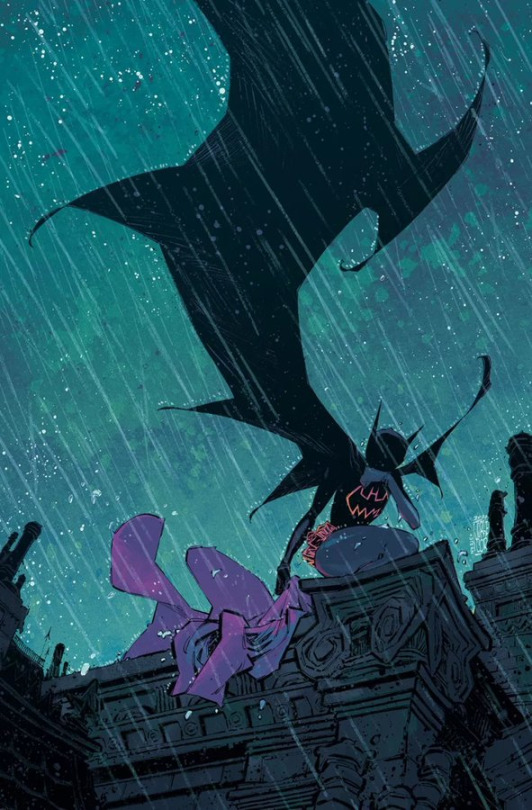
Have I gotten over Batgirls ending? No, I haven't. But there are a few things that give me peace when it comes to Cass still remaining as Batgirl for the future.
This does feel different than say 2006, 2009, and 2011. I feel okay here and not this overwhelming fear of dread or concern like in either of those years. The reasons being--
#1 Spirit World has her in it and as Batgirl. Six months (so far) of Cass as Batgirl in it. I'm square with that. Do I want the series to last longer than six issues? YES! I love Alyssa Wong writing Cass and gimme more of Haining drawn-Cass, please!
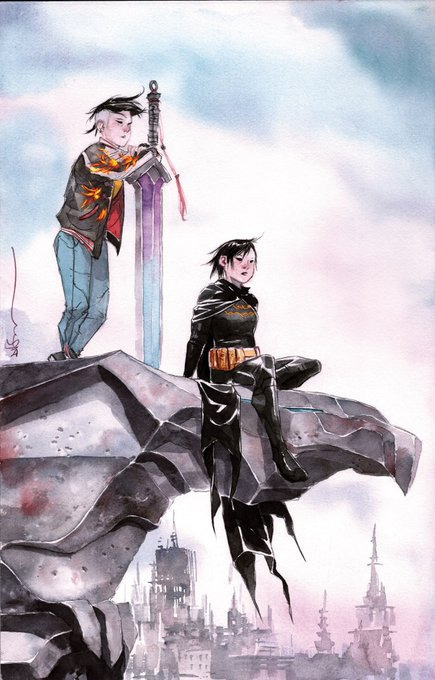
Also, it looks like we're getting Dustin Nguyen variants for each issue. Took DC long enough to do more of this and if you aren't getting this series for all of the above-mentioned which is mystical antics with Cass teaming with Xanthe and Constantine-- then COME ON?!
#2 DC and more importantly WB is pushing the character. We have a variation of Cass coming next week with Batman: The Doom that Came to Gotham and of course Bat Wheels has her too!
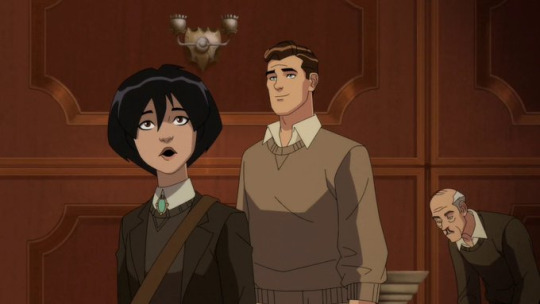

While neither is embracing the comic version, I'm actually okay with both interpretations. Um... cute my spoilerish thoughts on that.
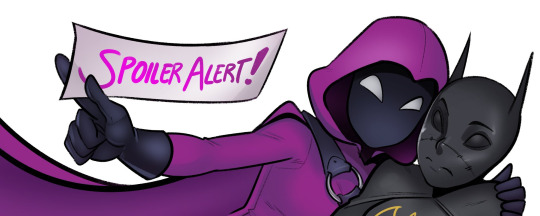
I really want a sequel short with an older Ka Li Cain suiting up as a Bat to combat a new mystical threat that ends up with BATman helping her. There are so many seeds throughout that showcase Kai Li is just as resourceful like Bruce was in the animated movie.
GIMME THAT FAN ART PLEASE ARTISTS!!
Then there's the James Gunn factor. The tease a month ago with him saying four characters Bleeding Cool listed should be in his universe. Cass does have good odds and the comic market might be agreeing.
Literally, searching now for Cass on eBay, the market is speccing HARD that she'll be showing up. They do get some things wrong, but my gut says this might happen. We have Cass in various things above and if is next-gen it makes sense for her to be Batgirl in Brave & the Bold.
Really my one fear is the latest teaser had Babs as Batgirl (no Cass or Steph). Literally, this was my third clue something bad was happening to Batgirls...
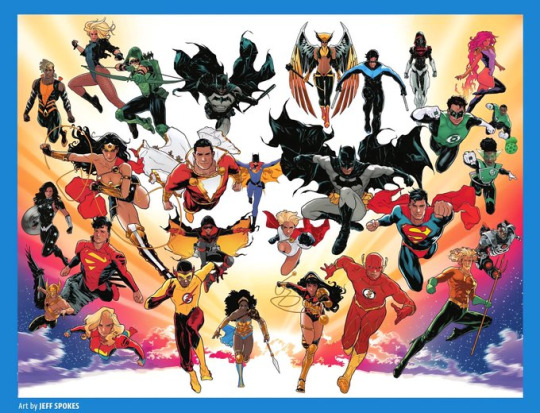
It also feels so wrong that each hero has a generational link save well Babs in this teaser (save to Bruce). Literally, you could've easily put Cass in there and it ease some more minds.
But that leads me to one thing. I feel like Stephanie Brown is getting the short straw. I love the character, and I feel like if someone is getting shorted it's her sadly.
Cass has so much going still, but Steph? *cricket chirps* Literally, she should be involved in a comic too and I guess all we have is her helping Jason in the Joker ongoing.
Again, I feel like DC Comics fumbled the ball with Batgirls, particularly with Babs in those early issues, and because of that it never caught on until the later ones.

I don't mind Babs in Nightwing as Batgirl or Oracle. I've more at peace of her balancing BOTH identities. Just that when she becomes Batgirl it SHOULD be a "business has about to have picked up" moment.
Babs as Batgirl shouldn't job (and if she is it's something she shouldn't have a chance against aka what Batman vs. Robin did last month. I can’t believe I’m saying something positive on this comic).
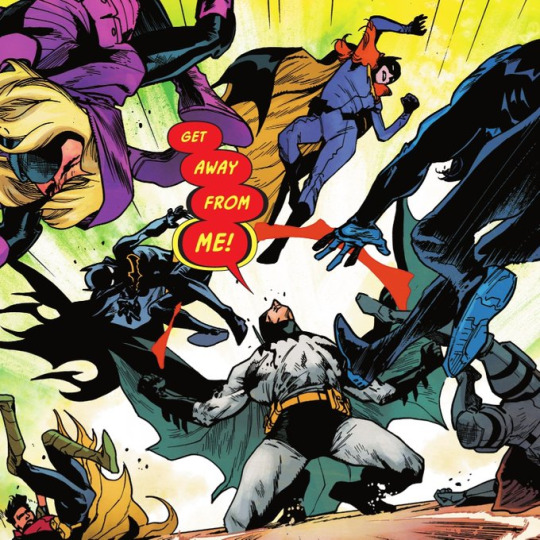
It should be treated as a MOMENT. Really #13 gave us just that. A moment where Bruce/Babs/Zee helped out Cass/Steph. Also the tease in this week's issue is also good (more on that another day).
The biggest problem Batgirls had in those early issues was Babs stealing the spotlight from Cass/Steph and Seer in #5-8). If you had Cass/Steph beating the Saints, Tutor, and Spellbinder. Add depth to Seer in #7-8?
We might have talked differently about this comic. But I'm not gonna fault the writers. They were given things beyond their control and did the best they could.
Clearly, #9 to now shows they can deliver some good stuff. The problem is... a good chunk bailed prior. I just wish DC gave Batgirls a better chance. I think all three characters are OWED that. After all the shenanigans done to them in the last TWENTY YEARS.
But the stuff I said earlier does make me feel at least comfortable that Cass can boomerang back. Because as I said numerous times over.
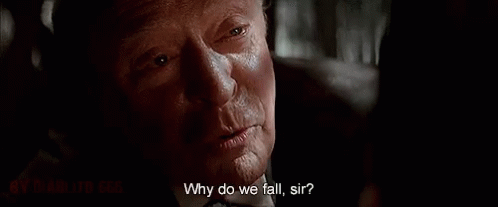
I'll cherish these next issues more so now. If this truly is the end of this comic. Because this comic for all its faults was a GIFT. May not have been a flawless one it still was a gift. I'll keep treasuring it. #Batgirls4life.
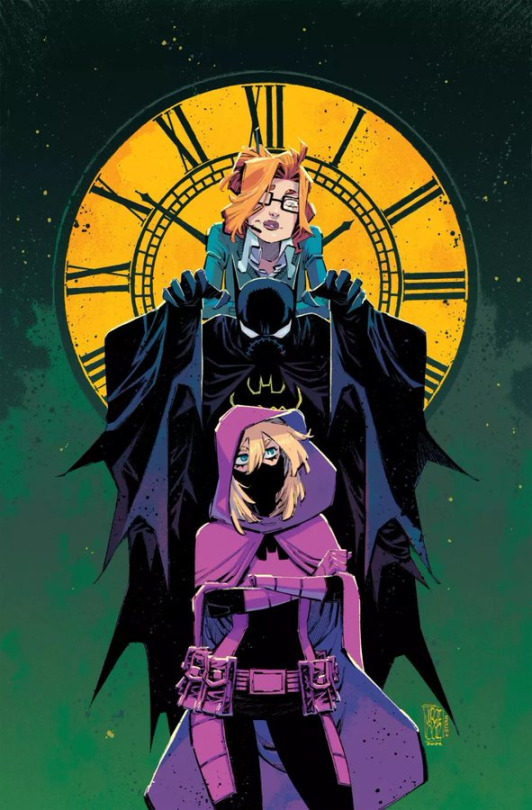
61 notes
·
View notes